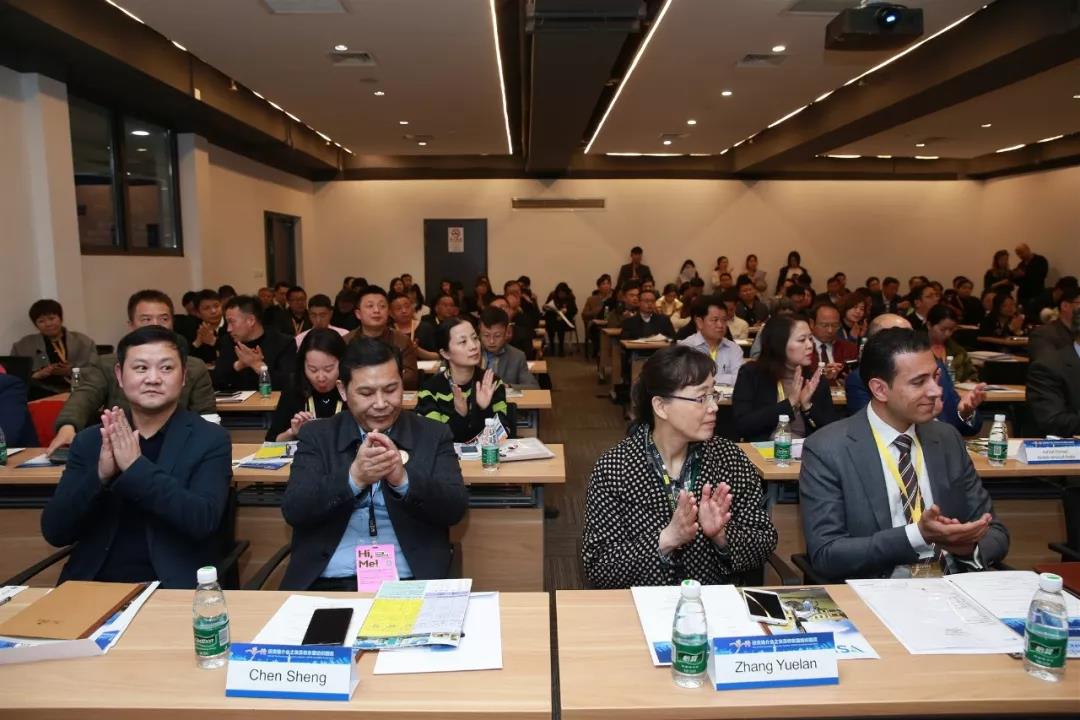Belt and Road Investment Promotion Seminar Egypt and ASEAN Textile Parks held successfully in Shangh
Mar 19, 2019 | by CT
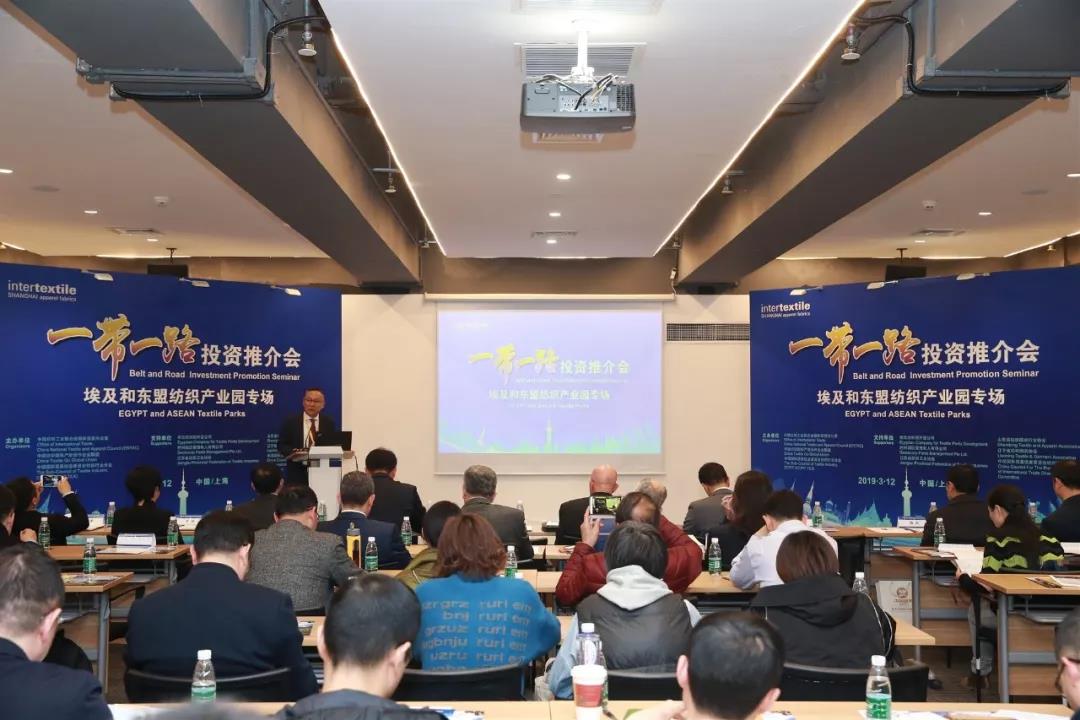
International Trade office of China National Textile and Apparel Council (CNTAC), China Textile Go Global Union, The Sub-Council of Textile Industry, CCPIT (CCPIT TEX), jointly organized the “Belt and Road” investment promotion seminar, which was successfully held in the National Exhibition and Convention and Center (Shanghai) on the afternoon of March 12th, 2019.
Mr. Mohammed Kassem, member of the board of directors of International Textile Manufacturers Federation (ITMF) and chairman of the International Trade Council of the Federation of Egyptian Industries, was invited to interpret Egypt’s investment policy and environment for Chinese textile and apparel enterprises and launch the project of the Egyptian Minya Textile City. Mr. Matal, consul of the Economic and Commercial Office of the Egyptian Consulate General in Shanghai, made a key statement on Egypt’s investment advantages. In addition, Shen Huimin, vice president of Sembcorp Parks Management Pte. Ltd., a subsidiary of Sembcorp of Singapore, introduced his industrial park projects in Vietnam and Indonesia, so that delegates could better understand the investment advantages of the textile and garment industries of the two countries and related investment information of Chinese-funded enterprises.
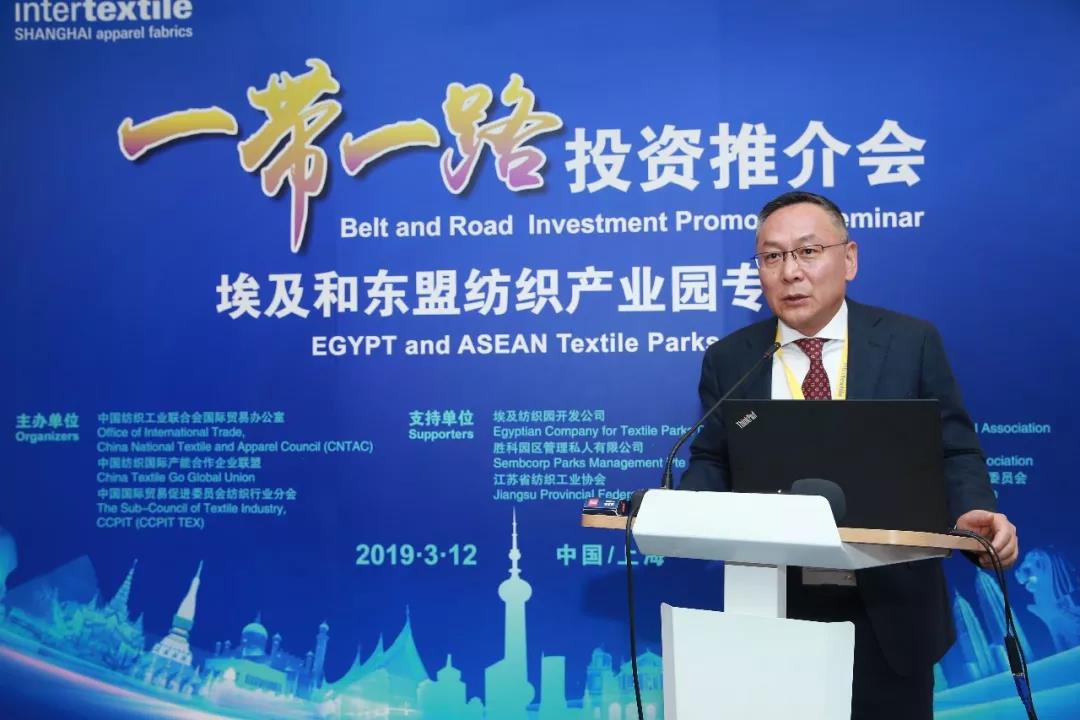
Xu Yingxin, Vice President of China National Textile and Apparel Council, pointed out in his speech that President Xi Jinping put forward the Belt and Road Initiative in 2013 for five years. The construction of “Belt and Road” has thrived in cooperation. China’s textile industry has entered the global layout stage, and has injected positive energy into the world's textile economy. In the past five years, the total investment of China's textile industry along the “Belt and Road” accounted for more than 80% of the total global textile investment in the same period. Such a high proportion is enough to show that the Belt and Road Initiative has ushered in a new opportunity for China’s textile industry. At present, Chinese enterprises have set up textile and apparel production, trade and product design enterprises abroad in more than 100 countries and regions, and China’s textile and apparel industry's foreign investment almost covers the entire textile and apparel industry chain. Overseas productivity distribution of China’s textile industry shows a pattern of “Mainland China+ASEAN+Africa”. The organizers carefully selected the national key high-quality industrial parks along the “Belt and Road”, hoping that these parks can escort Chinese textile enterprises to settle overseas.
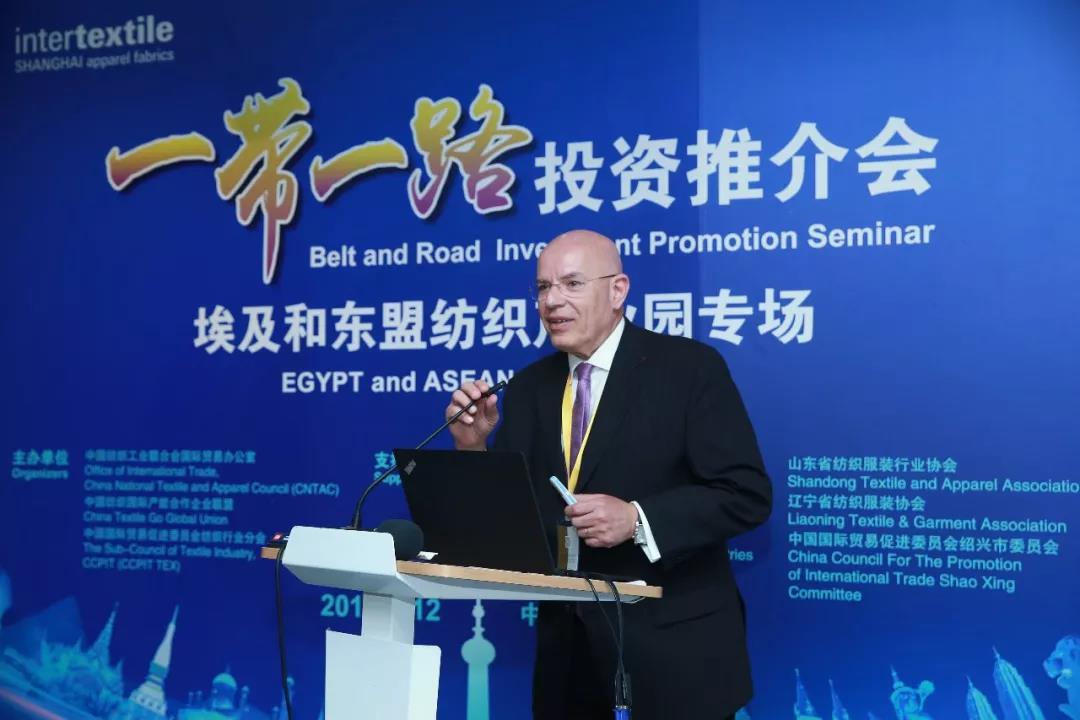
In his speech, Mr. Kassem pointed out that Egypt’s textile and garment industry has a good foundation and is in the forefront of Africa. The total number of employees in Egypt’s textile and clothing industry is 1.5 million. Textiles and tailoring accounted for 15% of Egypt’s non-oil and natural gas exports and contributed 3% to GDP. Egypt has comparatively rich advantages in cotton raw materials, extremely preferential trade policies and low production factor costs, which provide a good basis for further development of textile and garment industry. At the same time, Egypt has attracted the attention of many world textile and garment enterprises and listed Egypt as its strategic plan for Africa distribution. The Mingya Textile City Project is the first textile and apparel free zone in Egypt. Textile City is located in Upper Egypt, 225 km south of Cairo, with convenient logistics. The region has a large population of young people of suitable age, suitable for the development of labor-intensive industries. The Egyptian government plans to focus on the development of advanced textile cities in the upper Egyptian region, and to build the necessary infrastructure for the textile cities in order to realize the country’s “vision for the development of textile industry 2025”. With this vision, Mingya Textile City will become one of the important platforms for overseas textile and apparel enterprises to settle in Egypt.
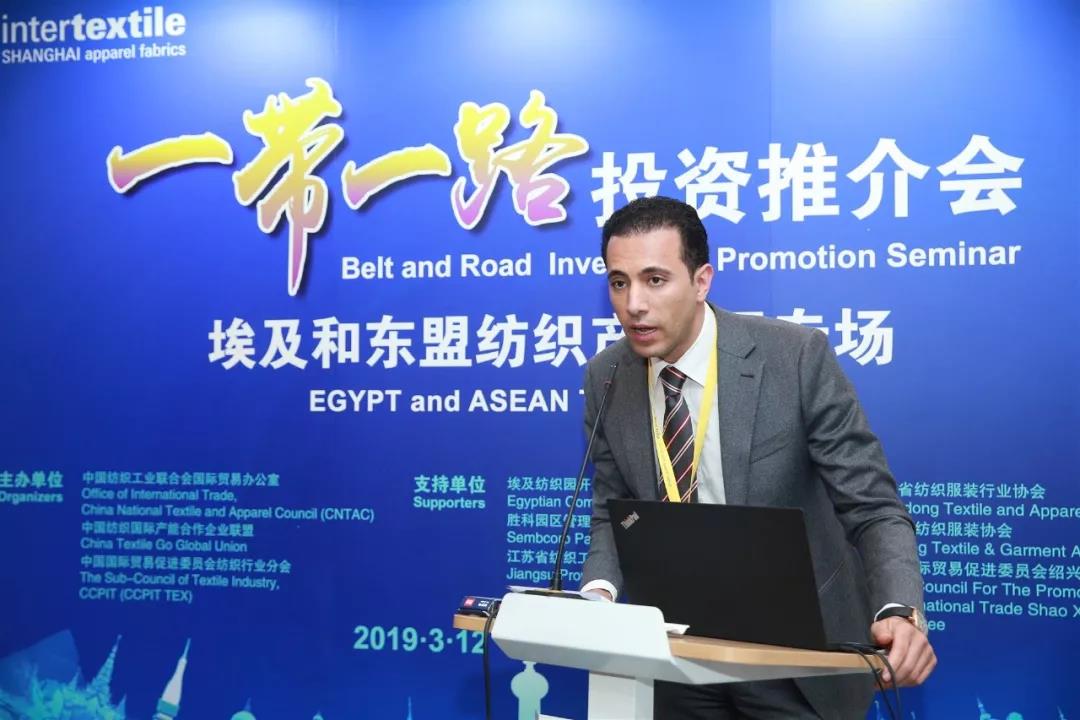
Mr. Matal pointed out that based on the long-term good cooperative relationship between China and Egypt, the two sides have close high-level exchanges, frequent economic exchanges and huge potential for development. The advantages of Egypt are: The location advantage is obvious and the radiation market is extensive. Adequate labor force. Export to Europe and the United States enjoys preferential trade policies.
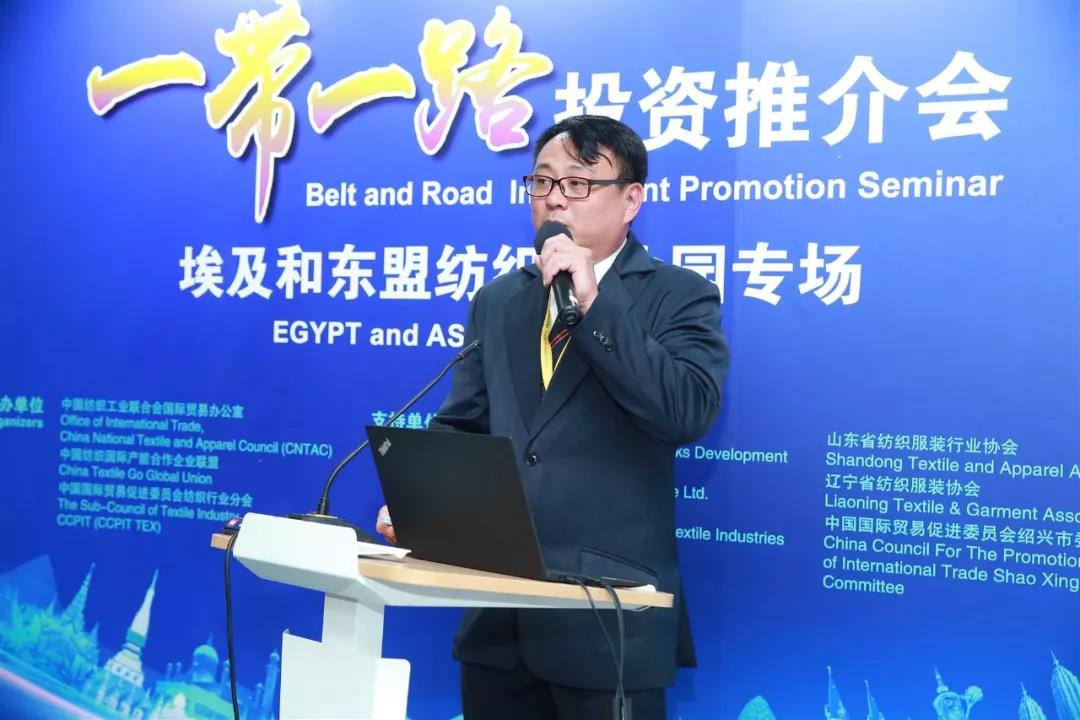
ASEAN is the largest overseas investment destination for China's textile and garment industry. In 2017, China’s textile and garment industry invested 655 million US dollars in ASEAN. Sembcorp which accounts for 49.5% of Temasek Holdings, has many high-quality industrial parks in ASEAN countries. Vice President Shen Huimin introduced to the delegates that Sembcorp has 14 industrial parks in China, Vietnam, Indonesia and India. Seven industrial parks in Vietnam are located in the southern, central and northern regions, which can meet different needs of investors. Faced with the complex and changeable international economic environment, China's textile and garment enterprises intend to layout ASEAN, and extend the industrial chain to avoid risks. With its good infrastructure, one-stop nanny service and brand influence, Sembcorp’s industrial parks has won the favor of many well-known enterprises. At present, some well-known Chinese textile and garment enterprises, such as Esquel Group and DDI Group, have entered their industrial parks in Vietnam.

The promotion seminar was strongly supported by Jiangsu Textile Industry Association, Shandong Textile and Apparel Association, Liaoning Textile & Garment Association, China Council for the Promotion of International Trade Shaoxing Committee and Huzhou Committee. Participating enterprises exchanged and discussed with the speakers on specific issues of concern, such as related costs, environmental requirements, labor and so on. As one of the related activities of the spring combined show sponsored by China National Textile and Apparel Council, the conference has attracted the attention of many key textile and apparel enterprises and exhibitors. In 2019, the uncertainties and complexity of the world economy have been further enhanced. The worrying features of the changing situation have made Chinese textile enterprises pay more and more attention to the layout of international production capacity, which has been fully confirmed by the scene full of seats and heated discussions.
